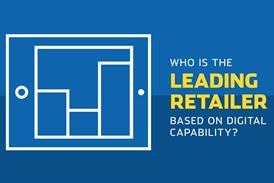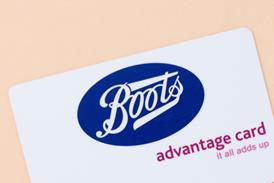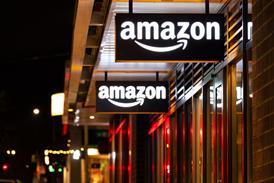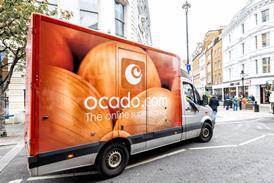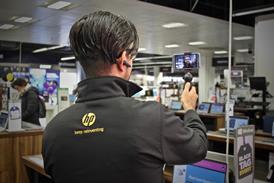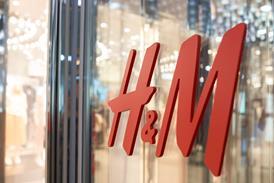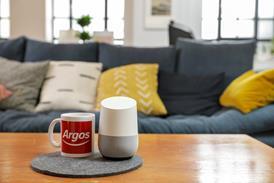The grocery market has faced massive structural shifts over the past decade, and the pace of change is only likely to increase as shopping habits continue to evolve and margins are squeezed by intense competition and rising costs.
While the big four remain dominant in terms of market share, their hold has been slipping as shoppers’ recessionary habits of browsing around for the best value have become ingrained in the consumer psyche.
The discerning mindset resonates particularly well online, with the ease of price comparison. But the growth of ecommerce in grocery continues to bring challenges, as margins are tight and the ability to fulfil online orders fast and conveniently is costly.
Retailers in the sector are focusing their attention on how to unify channels to boost profitability, at a time when the industry faces unwelcome cost pressures from the adverse exchange rate and wage pressure from the introduction of the national living wage.
The main grocers have been joining forces with others in the sector to fight back, as most recently seen with the proposed merger between Asda and Sainsbury’s, enabling them to increase their scale and boost buying power at a global level.
But, the growing use of technology in the digital economy presents a crucial opportunity for food and grocery retailers to carve out a competitive advantage.
Cross-channel
Convenience is key for the grocery sector, but it’s not just about being the most local supermarket any more. Food retailers, with their typically large store estates, are well positioned to embrace cross-channel opportunities, which can ultimately drive convenience in the digital age.
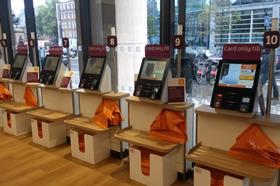
In part, stores should act as fulfilment points for online orders to remain relevant in the next decade.
Half of food and grocery retailers offer click and collect to store, which can bolster margins for the online channel, saving the need for costly home delivery and providing an opportunity to upsell. However, while click and collect provides advantages over home delivery for the retailer, it is unclear if the consumer demand is there for click-and-collect grocery yet.
For the grocery sector, convenience goes beyond a retailer’s fulfilment offer, though. In-store, 56% of grocery retailers have invested in self-service kiosks, which ultimately reduce queuing times. Some grocers, such as Tesco, Waitrose, Sainsbury’s and The Co-op, are also experimenting with scan-as-you-go apps, enabling customers to scan and pack items as they walk around the store and skip checkout queues almost completely.
Ecommerce
With online continuing to gain traction in the sector, there remains plenty of scope for food and grocery retailers to harness the capabilities of ecommerce to drive the user experience.
The use of product recommendations online is surprisingly low compared to the other sectors reviewed. While 63% of grocery retailers recommend complementary products online, only 38% recommend products based on a customer’s personal browsing and purchase history – both important capabilities to drive average basket values.
Personalised recommendations based on a customer’s browsing are particularly important when delivering ease of shop, particularly when many of the grocers’ sites offer convoluted navigation due to the sheer breadth of SKUs.
Ease of search can greatly play into user experience online, especially for those customers with specific product preferences. Therefore, it is surprising that only 56% of grocery retailers have enabled search autocomplete and suggestion capabilities on their sites, meaning many can’t handle misspelled search terms.
On the other hand, for staple items, shoppers in the sector typically make repeat purchases. It is astonishing that half of food and grocery retailers do not have a saved items function.
Perhaps the biggest gap though, in the food and grocery experience online, is product comparison. It’s second nature to pick up a couple of food items in-store and compare costs, ingredients and nutritional value side-by-side, but this is vastly restricted online, with no retailer offering easy product comparison on groceries.
Logistics and customer service
A convenient food and grocery offer in the digital age requires a breadth of fulfilment options, but the last mile is expensive when logistics are constrained by the need to deliver fresh food quickly.
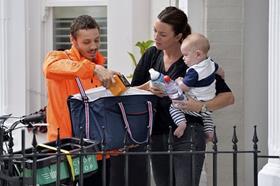
The drive to make this profitable is perhaps where consolidation and partnerships come into play.
While only 19% in the sector offer early-morning delivery, there has been much talk about Tesco leveraging Booker’s early-morning delivery vans – when delivering to catering businesses – to drop off Tesco orders on their return leg.
The Co-op, which is yet to launch an online grocery operation, has shone light on another approach by partnering with logistics firm Deliveroo to trial one-hour delivery in Manchester.
By turning to an established logistics firm renowned for speed and picking from local stores, The Co-op has been able to trial online without sunk costs such as dark stores or a fleet of home delivery vans.
Sainsbury’s is also looking at alternatives to vans for fast deliveries. It launched a trial with e-cargobikes.com to trial grocery deliveries using traffic-beating electric cargo bikes in London in April, which followed the launch of its one-hour Chop Chop delivery service last year.
Aside from speed, customers want guarantee, and time-slot delivery has become more popular, with 64% of supermarkets offering the service.
But placing delivery in the hands of customers using drive-through pick up points is also an option for larger stores, to reimagine excess space and reduce delivery costs. Asda and Tesco have trialled the service in a limited number of locations.
Marketing
With volume growth increasingly challenging for the sector, holding on to existing shoppers and persuading lapsed customers to return should be at the top of the sector’s agenda, which makes loyalty initiatives and personalised offers increasingly important.
| Retailer | Loyalty programme | Loyalty app |
|---|---|---|
| Aldi | No | No |
| Asda | No | No |
| Booths | Yes | No |
| Fortnum & Mason | No | No |
| Hotel Chocolat | Yes | No |
| Iceland | Yes | No |
| Lidl | No | No |
| Majestic Wine | No | No |
| McColl's | Yes | No |
| Morrisons | Yes | Yes |
| Ocado | Yes | Yes |
| Sainsbury's | Yes | Yes |
| Tesco | Yes | Yes |
| The Co-operative Food | Yes | No |
| Thorntons | No | No |
| Waitrose | Yes | No |
The sheer size of the market means food and grocery retailers collect vast amounts of customer data, though a third of retailers in the sector are yet to leverage this data to reward customers through a loyalty programme. Asda is the most high profile grocer not to operate a loyalty scheme.
Loyalty can boost profitability. The Co-op relaunched its new membership scheme in 2016 with a focus on driving higher-margin own-brand sales by offering a greater reward on those purchases.
Simplicity is at the core of Morrisons’ More loyalty scheme, helping it rank top in Indicator’s marketing category. The loyalty card relaunched in 2016 and offers a personalised in-app experience in which customers can see More offers by store choice, driving footfall to its stores.
Customer insight garnered through loyalty scheme data can support strategic decisions. For example, Morrisons has developed a sharper pricing strategy and tweaked in-store ranges on the back of learnings from its scheme.
Retail Week Indicator 2018 rankings
- 1
- 2
- 3
- 4
- 5
- 6
- 7
- 8
- 9
- 10
- 11
 Currently reading
Currently readingRetail Week Indicator: Food and grocery sector analysis
- 12
- 13
- 14
- 15
- 16
- 17
- 18
- 19
- 20
- 21
- 22
- 23
- 24
- 25
- 26



